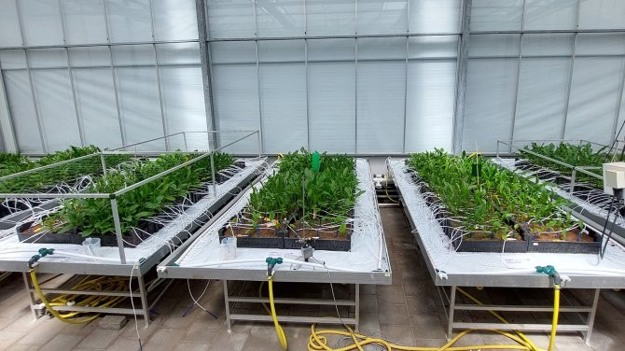The cultivation of Zantedeschia tubers can be shortened considerably by growing in a greenhouse. A proportion of the tubers are ready for sale after 1 year instead of after approximately 3 years. This new cultivation method also means that minimum chemicals are needed for crop protection, as the Greenhouse Horticulture & Flower Bulbs Business Unit of Wageningen University & Research discovered in a PPP project.

The research into Zantedeschia is taking place in the context of the Fundamental System Leap PPP project. This project looks for new cultivation methods for flower bulbs. The aim is to significantly reduce the use of chemical crop protection by having the cultivation take place partly in a greenhouse.
In practice, clean Zantedeschia plantlets coming from in vitro culture are grown in a greenhouse for the first year. They are harvested and replanted in the field for an extra year. Then, they are cut into small pieces (approximately 1 x 1 cm) and regrown outdoors for one or two more years. This outdoor cultivation exposes the young tubers to diseases and pests.
In the WUR research, the Zantedeschia in vitro plantlets were cultivated in a greenhouse during the winter. Minimum heating and LED lights were used to save energy. After approximately 4-4.5 months, the tubers were harvested and stored in special conditions for a short time. Because these tubers produced sufficient eyes, they were multiplied by cutting them into even smaller pieces (0.7 x 0.7 cm). These were planted in the greenhouse in the late spring and harvested after 6-7 months in November.
About 25% of the bulbs were large enough for the market. The rest were grown in the field for another year; however, they were resilient enough to defend themselves against diseases and pests. The new cultivation method, therefore ensures fast cultivation with fewer resources and minimal energy consumption.

However, this new cultivation method needs to be fine-tuned to make it profitable. The highest cost comes from the substrate, which is used in high amounts in this system. The research ends at the end of 2023, so any further improvement to the system needs to be investigated in a follow-up project.
Source: wur.nl
